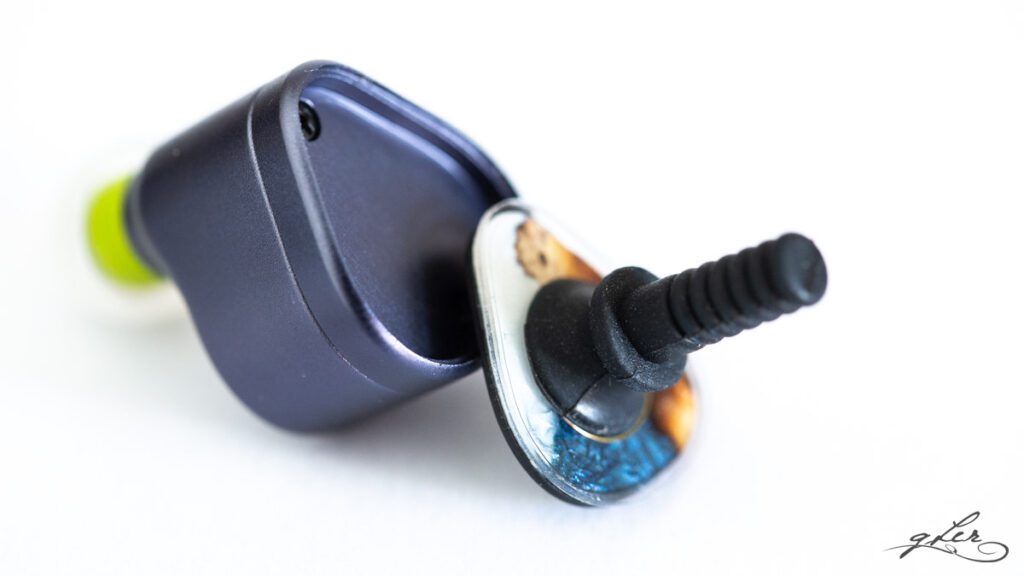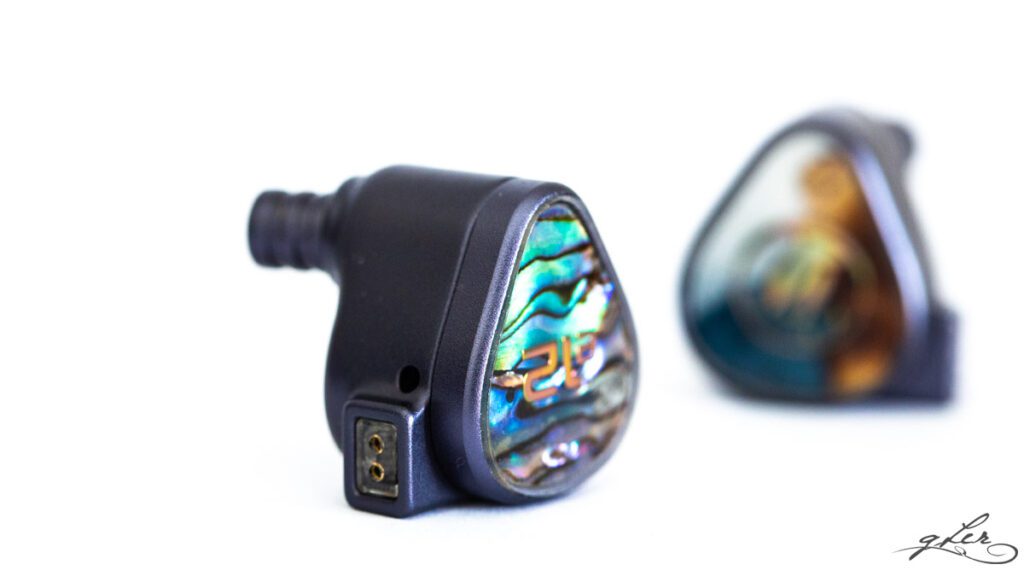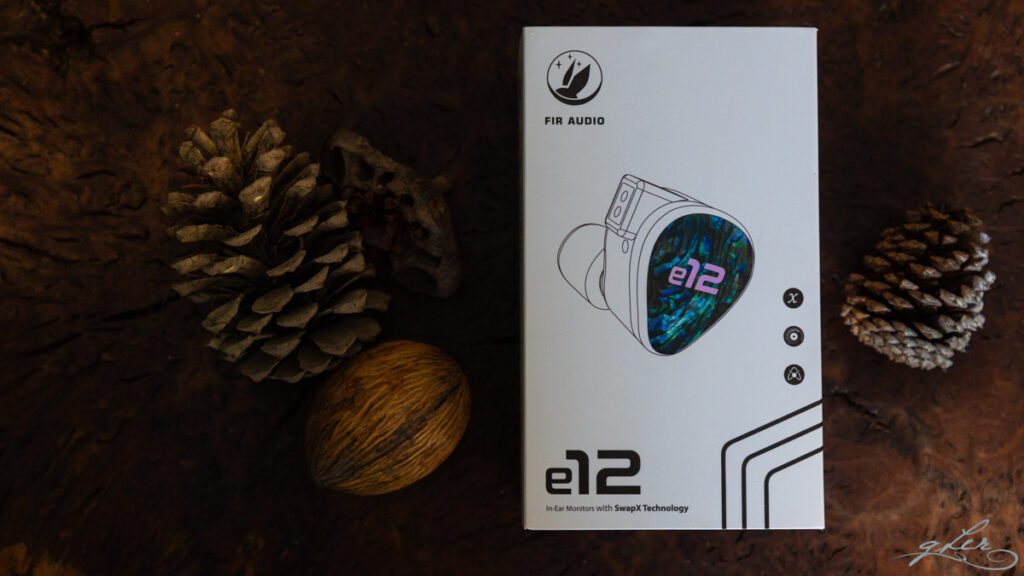Thanks to FIR Audio and especially Vlad Belonozhko for sending us a sample e12 for review, and for their continued support, which is much appreciated.
Introducing the Electron Series
FIR Audio has spent more than two years wowing audio enthusiasts with its Frontier Series of IEMs, two of which, Xenon 6 (reviewed here) and Radon 6 (reviewed here) are now a staple of my high-end IEM test bench.
So, it came as a bit of a surprise when FIR snuck in a teaser late last year of a new mystery IEM, and then proceeded to presumably continue the Frontier naming convention with Electron 12 (e12). Since all previous Frontier IEMs were named according to driver count, I assumed this would be an all-new flagship 12-driver IEM to surpass the brilliance of the co-flagships.
Instead, what we got was a whole new series, dubbed Electron, and fronted by the $1,800 single 12mm electrodynamic driver-equipped e12. So not a Frontier, not a flagship, but instead an all-new trickle-down design with some smarts of its own. Trust FIR to pull a proverbial rabbit out of the hat!

I only got to read brief impressions of the e12 prototype from fellow enthusiasts visiting last year’s Head-Fi CanJam in California, before Vlad let me know an e12 sample would be heading my way. He also asked me to pick a custom faceplate to swap out with stock, and since I’ve always wanted to see what FIR’s Titanic faceplates looked like in person, that’s what I chose.
It’s been about a month since I received e12, and despite fighting my way through a logjam of other reviews, I managed to sneak in several extended listens before sitting down for the review proper. I suggest you strap in and hold on tight, because like I discovered with e12, this review is going to take some wild twists and turns before we’re done.
Electron tech
Priced significantly lower than the top-of-the-line Frontiers, e12 is still relatively costly compared to most single dynamic driver competitors. Much of the tech FIR has crammed into these small but not insignificant aluminium alloy shells has either trickled down from the Frontier Series, or passed down from FIR’s original M-Series IEMs.
SwapX. The only ‘new’ tech, if you can call it that, is a swappable faceplate system called SwapX. The e12 universal shell features a lipped shelf which accepts a magnetic faceplate that snaps into place above the main housing. FIR provides a small suction tool to pry the faceplate out, replaceable with a wide selection of optional faceplates (priced at $149 per pair), mostly carried over from the design catalogue of FIR’s custom IEMs.

Removing the faceplate reveals a panel with two screws that gives easy access to the IEM’s internals, all part of FIR’s Rigid system – introduced with Frontier – that makes the IEMs more robust and serviceable for improved longevity. My guess is that, in designing the SwapX assembly, some clever designer had the idea to attach removable faceplates to hide the screws, and a whole new, and admittedly very attractive, marketing idea was born. Don’t quote me on that, though, it’s just a hunch.
Tactile Bass. It’s being touted as an all-new technology with e12, but in actual fact we first saw the idea of Tactile Bass – using the entire internal volume of the earpiece as a bass resonance chamber for improved texture and ‘tactility’ – in FIR’s M-Series.
Still, with a 12mm electrodynamic driver housed inside a rigid metal shell, this is probably the best incarnation of Tactile Bass we’ve seen to date, and while it doesn’t offer quite the same level of physical engagement as Frontier’s Kinetic Bass, it’s still a very enjoyable, rather visceral approach to bass delivery, as you’ll soon see.

The other technologies FIR’s used with e12 – SwapX 2-pin and Atom venting – we’ve already seen in some form before. The 1,000-connection-rated 2-pin design debuted with the Frontier Series, though is more directly accessible here with the SwapX Assembly. Likewise, Atom venting has been a feature of FIR IEMs from the start, providing comfortable ear relief in addition to regular bass driver venting. The Atom module in e12, rated at 17dB isolation (equivalent to Frontier’s gold module), is internal, with only a small visible vent near the 2-pin connectors denoting its location.
Unboxing, accessories and design
e12 ships in a standard FIR-style box, which is to say a solid rectangular hardboard box with an illustrated sleeve. Like the Frontiers, the sleeve features a wire diagram of the e12 earpiece, but with a foiled, gloss colour faceplate, hinting at the new swappable faceplate feature inside.
Inside the box you’ll find a welcome letter from FIR CEO and #1 e12 fan, Bogdan Belonozhko, a warranty card, FIR’s current ‘Space Force’-themed iron-on badge, and the earpieces themselves, pre-connected to the cable inside a die-cut foam tray. Beneath the tray, a round leather puck case holds spare tips (a set each of foam and wide-bore silicone tips in various sizes), a cleaning tool, and the new miniature rubber suction tool for removing swapping out the faceplates.

The cable FIR chose for e12 is the same excellent 4-wire OCC copper-plated silver cable we first saw with Rn6, only this time the dark brown sheathing has been replaced by a clear sheathing that shows off the shiny copper shielding beneath.
It’s a high-quality cable for sure, with excellent ergonomics and neatly-machined hardware, and importantly, no microphonics to spoil your sound quality while wearing it. However, as you’ll soon read in my sound impressions, I feel this particular cable is a sonic mismatch for the e12, at least for my preferences.
As for the e12’s party trick, I can confirm ‘SwapX technology’ works as advertised. Lightly press the suction tool to a faceplate, pull away, and the faceplate lifts clean off the earpiece housing below. Once attached, the faceplates hold on surprisingly tightly, and won’t come off even with vigorous movement. Spare plates ship in small plastic containers, which makes storing the unused plates safe and simple. As for the looks, well, that’s down to individual taste, but it’s a neat idea and lets you give your own set of e12s a personal touch.

To be perfectly honest, I find the stock Electron faceplates very attractive. I’m not sure if they’re made from actual abalone shell, but they look very convincing, and the green/blue hues dance around invitingly in the light. I also like the new rainbow-hued e12 and FIR Bunny logos. As such, unless you’re the type of person that loves to spend money on tinkering, or have a particular favourite look in mind, there’s no real reason to swap plates at all.
It would be cool if FIR offered customers their choice of standard faceplates, but maybe that’s still coming with the imminent introduction of a custom e12 option.
Design-wise, the e12 earpieces look and feel very solid and well-made. They follow the same design language as previous fir IEMs, with their teardrop shape, flat face and thickish (but thankfully not too elongated) nozzle.
Unlike the Frontiers, there’s no mesh plate in the nozzle protecting the internals from wax and debris, which means more rigorous maintenance will likely be needed over time to prevent any clogging. The earpieces themselves aren’t too heavy, and fit is fine, not fatiguing for extended sessions, especially with my newfound favourite tips, SpinFit CP145 (I’ll do some tip-rolling later).

Continue to sound impressions…



